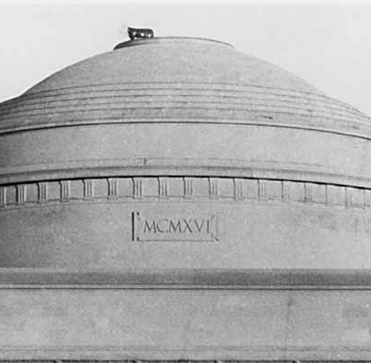
in honor of tau by Paolo A. '21
the superior circle constant
In honor of blog post number \(6283 \approx 1000\tau\), I’ve decided to do a post dedicated to my favorite number. Here, \(\tau\) (the Greek letter tau, usually pronounced to rhyme with how but some people rhyme it with law) refers to the superior circle constant, \(\tau = 6.283… = 2\pi\). And I cannot help but tell you about the glory that is tau, alongside a few anecdotes about tau, MIT, and myself c:

proof that this is the post number i claim it was
why tau?
Note: This section gives an introduction to tau from the ground up. The only thing needed to understand everything is calculus, but if you haven’t taken that yet, this section should still be accessible01 in this section, moreso than anywhere else in my blogs, you will see my teaching background come through. i love teaching things (have taught at middle school math camps and one-off classes many times), but haven't done it enough recently even with just algebra/geometry (hopefully). Much of the material from this section is drawn from Michael Hartl’s The Tau Manifesto. I encourage you to read it for a deeper, more involved read about tau!
Pi, or 3.14159…, or \(\pi\), is perhaps the single most iconic mathematical object. From the t-shirts with pi to Pi Day celebrations on March 14th to the Simpsons, even. Pi is a number that relates two important parts of circles: their circumference (length around the circle) and diameter (length across the circle). The ratio of every circle’s circumference to its diameter is exactly pi: in other words, \(\pi = \frac{C}d\).

all diagrams are drawn by yours truly on my mit ipad. i apologize for my terrible handwriting
But should we use a diameter for our circle constant? After all, most geometry classes introduce circles as
circle noun: a shape that is made of of the set of all points that are a fixed distance away (the radius) from a single point (the center)
or something similar.
Most notably, we don’t define a circle by the length across it, but instead by its radius — half of that. The reason for this is deeper than a standard dictionary definition: there are many shapes (such as the Reuleaux triangle) that have a constant width, but a circle is the only two-dimensional figure for which all points on the boundary are the same distance from a center.
So perhaps it’s better to use a different circle constant: one that relates a circle’s circumference and its radius.
Doing a bit of algebra on the definition of \(\pi\), and using the fact that a diameter \(d\) is twice the radius \(r\) (and so \(d/2=r\)) we get
\(2\pi = \frac{2C}{d} = \frac{C}{d/2} = \frac{C}{r}\).
And so \(2\pi\) gets at an even more fundamental relationship that is present in circles — the relationship between the circumference and the radius. For convenience, let’s denote \(2\pi\) as \(\tau\).

This idea that pi isn’t truly “fundamental” has been talked about for a long time. Michael Hartl wrote the first version of The Tau Manifesto for Tau Day (June 28th) in 2010. Nine years earlier, Bob Palais wrote a 3-page article titled “\(\pi\) is wrong!” in a mathematical newsletter. But before just blindly accepting that \(\tau > \pi\) (true by definition — a tau-tology, if you will), it’s important to understand other places that \(\pi\) is used besides the circumference of a circle.
If you’re familiar with geometry, you might be incredibly hesitant about \(\tau\) because of the formula for a circle’s area:
\(A =\pi r^2 = \frac{1}{2} \tau r^2\).
This formula, at first glance, looks much uglier with tau than with pi, with a constant factor of \(\frac12\) sticking out front.
If you’re taking a physics class right now, the form of the area equation with tau might look quite familiar to you. A few examples:
- \( \Delta x =\frac12 at^2\) is the formula for the distance traveled \(\Delta x\) by an object that starts at rest and accelerates at a rate of \(a\) for a time of \(t\).
- \(E_k =\frac12 mv^2\) is the kinetic energy \(E_k\) possessed by an object with mass \(m\) traveling with velocity \(v\).
- \(E_s = \frac12 k (\Delta x) ^2\) is the potential energy \(E_s\) stored in a spring with a spring constant of \(k\) that is displaced from equilibrium by a distance of \(\Delta x\).
With these in mind, the factor of \(\frac12\) looks a lot less weird in front of there. But it’s not just a surface similarity: the \(\frac12\) exists in front of all of these equations for the same reason: the integral02 calculus alert! but if you have not taken calc, i hope that the next section provides a fun introduction to integrals \(\int x \,dx = \frac12 x^2\).
One way to “derive” the formula for the area of a circle is by taking the areas of thin rings in the circle (imagine an onion with many layers). If we find the area of each of these rings, and add them all up together, we can get the area of the circle!

But what’s the area of one of these rings? If some ring that’s \(r’\) out from the center has a thickness of \(dr’\), we can imagine “unrolling” it into a rectangle, and we can pretty easily see that it has a height of \(dr’\) and a width of the “circumference” of the ring, or \(\tau r’\). Then, its area is simply \(\tau r’ \, dr’\).

So, we can add up each of these areas (\(\tau r’_i \, dr\) for each ring \(i\), and so \(\sum_i \tau r’_i \, dr\) in total), and we’ll get the area of the circle! However, this sum is an approximation — but it’ll get more exact when the rings get smaller: i.e., \(dr’ \rightarrow 0\). When we do that, calculus students may realize that our sum turns into an integral, and we simply need to evaluate
\( \int_0^r \tau r’ \, dr’ = \frac12 \tau r^2\)
and the \(\frac12\) pops out — not by magic, but because of the power rule for integrals and the relationship of the area of a circle and its circumference.
Each of the equations above with factors of \(\frac12\) can be represented as some integral, a sum of “smaller things”:
- Integrating velocity \(v =at\) with respect to time gives \(\Delta x = \int v \, dt = \int at \, dt = \frac12 at^2\)
- Integrating momentum \( p = mv \) with respect to velocity gives \(E_k = \int p \, dv = \int mv \, dv = \frac12 mv^2\)
- Integrating spring force \(F = k\Delta x\) with respect to the \(\Delta x\) gives \(E_s = \int k \, d\Delta x = \int k \Delta x \, d \Delta x = \frac12 k(\Delta x)^2\)
And so now we have a second piece of evidence for tau: its use in the area formula.
Reason number 303 the highest number i can count to, and thus the final point i will be making is incredibly useful if you’re taking trigonometry/pre-calculus right now, there’s one incredibly useful reason to use tau instead of pi: its use in radians. If you’re unfamiliar with those subjects, the most important thing to know is that radians, like degrees, are a way of measuring angles, with the conversion rate \(180^{\circ} = \pi \, \text{radians}\). Below is an image with this conversion represented on two unit circles.

Radians are often troubling pedagogically; whenever you learn them, it’s often very hard to wrap your head intuitively around degree-to-radian conversions, what a radian actually means,04 a radian is the “number of radiuses” around the circle that you have traveled! one full circle is exactly tau=2pi radiuses, aka the circumference and other general confusion. If someone tells you that something is \(\pi/3\) radians, how many is that? It’s a third of a semicircle, \(180^{\circ}\), which makes it a sixth of a circle, or \(360^{\circ}/6=60^{\circ}\). Lots of steps, lots of room for silly mistakes, lots of room for head-scratching.
Now consider a unit circle, but with the angles denoted as multiple of \(\tau\):

Now, the numbers make much more sense. Since tau is symbolized by a Greek “t”, we can imagine that \(\tau\) stands for “turn”; one turn around the circle is exactly \(\tau\) radians! Now, conversions between angles and degrees are easy: one-eighth of a circle, or \(45^{\circ}\), is exactly \(\frac18 \tau\). Boom, angles and radians much easier. (I still sometimes convert radian angles given in terms of \(\pi\) to \(\tau\) so that I can work with them more easily.)
Not only is this helpful for understanding unit circle mechanics and conversions, but the usefulness of tau here extends to all trigonometric functions (sine, cosine, secant, cosecant all have periods of \(\tau\)). So useful indeed c:
This section is already going on a bit longer than I anticipated,05 oops, i get a bit carried away teaching things sometimes. but it's so fun! i've been considering an econ-teach-y post, one that's more rigorous than this post and teaches something that most people won't have seen before, so maybe be on the lookout for that so here’s a hodgepodge of various other places where you can use tau!
- The probability density function for the normal distribution with mean 0 and standard deviation 1 (the classic “bell curve”) is given by \( \frac1{\sqrt{\tau}} e^{-\frac12 x^2}\).
- Euler’s identity (\(e^{i\pi} = -1\)) becomes much more elegant if we square both sides, which then can be expressed in terms of tau: \(e^{i\tau} = 1\).
- The reduced Planck constant \(\hbar\) is given by \(\hbar = \frac{h}{\tau}\).
- Stirling’s approximation for the factorial function is given by \(n! \sim \sqrt{\tau n} \left( \frac{n}{e} \right)^n\) .
- Cauchy’s integral formula states that given a holomorphic function \(f\) on the complex plane \(\mathbb{C}\) and a disc \(D\) which has positively oriented boundary of \(\gamma\), every point \(a\) in the interior of \(D\) satisfies \( f(a)=\frac{1}{\tau i}\int_\gamma\frac{f(z)}{z-a}\, dz \).
If you’re interested in more: as I stated above, the material here is largely drawn from The Tau Manifesto by Michael Hartl. I highly encourage reading through it for more tau-related arguments (with math that is deeper than this post) and rebuttals to counterarguments proposed by the Pi Manifesto (which was written in response to The Tau Manifesto :P).
Since The Tau Manifesto was published, there has been an incredible growth of support for a new circle constant. To get an idea of the scale of this, peek through The State of the Tau. Some personal highlights include:
- SMBC and XKCD comics referencing tau
- PEP 628 added tau to Python’s official math library
- Multiple references to MIT
That last bullet point transitions nicely into…
tau, mit history
As one might expect, an institution like MIT, home to many a math nerd, has a few fans of the superior circle constant.06 not to say that there aren’t supporters of the other circle constant: a floor in east campus is named ⌊π⌋ (floor pi, and yes they are on the third floor), mit traditionally releases its rd decisions on pi day, and hacks with <a href="http://hacks.mit.edu/Hacks/by_year/2015/pi/">pi in the sky</a> or a <a href="http://hacks.mit.edu/Hacks/by_year/2001/magic_pi_ball/">magic pi ball</a> Here’s a few ways in which tau has made an appearance at MIT.
- MIT students are known for their hacks: pranks and jokes that students pull, often by putting objects in places that they shouldn’t be. In 1979, some MIT students stuck a (plastic) cow on top of the Great Dome.

cow on dome! from mit museum
This cow was stolen from Hilltop Steak House in Saugus; later, Hilltop donated an extra plastic cow to the MIT Museum exhibition to commemorate the hack. This cow now sits inside of Stata, nearby to other hacks (such as the police car and Collier’s Cranes).
On Tau Day 2015, the hack exhibit itself was hacked: some MIT students decorated the cow with tau-associated memorabilia in an exhibit dubbed “Tau on the Cow”. Check out the MIT Hack Gallery for some photos and more information about the hack!
- Four fraternities at MIT (under the MIT Interfraternity Council) have “Tau” in them: Delta Tau Delta, Tau Epsilon Phi (coed), Theta Tau, and Zeta Beta Tau. The Number Six Club (Delta Psi) is the Tau Chapter, and the fraternity Delta Kappa Epsilon is the Sigma Tau Chapter. Two honor societies at MIT have tau in them: Tau Beta Pi (engineering honor society) and Pi Tau Sigma (mechanical engineering honor society). The second floor of the west parallel of East Campus is named Putz, which sometimes goes by Pi Tau Zeta.
- MIT Admissions has recently been releasing its decisions at 6:28 PM ET on Pi Day.07 mit hasn’t yet announced when decisions will be released for this year! i am not an admissions officer and know nothing about when decisions will be released. sorry to disappoint aaaaa This happened for the first time in 2012, when Sir Nigel Blogberry announced some SMASHING news! in a post that is so incredible that you absolutely need to read it. Matt McGann ‘00, former director of admissions, wrote a very short post that year acknowledging the tau vs. pi debate. All good times.
tau, my history
I first encountered tau somewhere around 2013, just when I was starting high school. I’m not exactly sure where, but I suspect that it was a Vihart video.
I intended for this section to be a lot longer to talk about lots of things with myself and tau: but I’m limited by the fact that 1) I entered high school literally 8 years ago, and remembering things from back then is very, very hard, and 2) I don’t have any photos from that time.08 my phone erased all of my photos in november 2018. no backups means those photos are gone forever :c So instead, here’s a few anecdotes about me and tau from way back when.
- My freshman year, someone in my math club gave me the nickname Tau-lo. It stuck around. One of my friends from high school still calls me Taulo everytime she sees me.
- Tau was (and continues) to be a part of a lot of my online identity: Gmail profile picture, parts of my names on many platforms, etc. I’m currently considering changing my default username on sites, and many of my ideas still involve tau…
- Searching through my Google hangouts chat history gives me hundreds of messages just about tau. Granted, some of these are non-math uses of tau (like for the time constant of RC circuits) but many of them are just people getting my attention in a groupchat or talking about the number.
- At some point in high school, I had 100 digits of tau memorized and only a handful of pi digits memorized. That changed in my senior year, where as a part of my school’s math club, I judged the pi-reciting contest. I ended up accidentally learning a lot more digits of pi because I had to keep checking if people were saying pi correctly. Sigh.
- At ARML 2017, my team was playing a mafia game with a few other friends from other regions (including some that are at MIT now). I moderated a 15-person game of mafia, themed as the tau-n vs. the pi-mafia, and it ended 3 people and a confirmed \(\tau\)-nsperson needing to guess the last member of the pi-mafia with basically no information. (Rinik K. ’21 and Freya E. ’23 were there to witness the glory of that game.)
I tried to pack light when coming to Cambridge this year, so my tau shirt is currently stowed away in a box back at home, alongside many other shirts that I haven’t worn in a while. But come June 28th,09 6/28, tau day c: I promise that I will be putting that shirt back on to celebrate and spread the glory of \(\tau\).
- in this section, moreso than anywhere else in my blogs, you will see my teaching background come through. i love teaching things (have taught at middle school math camps and one-off classes many times), but haven't done it enough recently back to text ↑
- calculus alert! but if you have not taken calc, i hope that the next section provides a fun introduction to integrals back to text ↑
- the highest number i can count to, and thus the final point i will be making back to text ↑
- a radian is the “number of radiuses” around the circle that you have traveled! one full circle is exactly tau=2pi radiuses, aka the circumference back to text ↑
- oops, i get a bit carried away teaching things sometimes. but it's so fun! i've been considering an econ-teach-y post, one that's more rigorous than this post and teaches something that most people won't have seen before, so maybe be on the lookout for that back to text ↑
- not to say that there aren’t supporters of the other circle constant: a floor in east campus is named ⌊π⌋ (floor pi, and yes they are on the third floor), mit traditionally releases its rd decisions on pi day, and hacks with pi in the sky or a magic pi ball back to text ↑
- mit hasn’t yet announced when decisions will be released for this year! i am not an admissions officer and know nothing about when decisions will be released. sorry to disappoint aaaaa back to text ↑
- my phone erased all of my photos in november 2018. no backups means those photos are gone forever :c back to text ↑
- 6/28, tau day c: back to text ↑